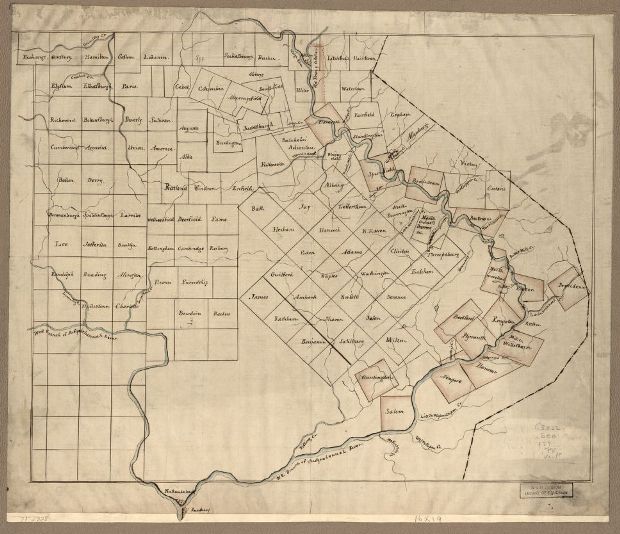In 1753, amidst a flurry of land speculation and westward expansion that captivated the imagination of American colonists, Connecticut settlers formed the Susquehanna Company for the purposes of developing the Wyoming Valley in northeastern Pennsylvania.
A shortage of farmland and a growing population had encouraged some in Connecticut to revisit the terms of the colony’s original land grant, the Charter of 1662, which England’s King Charles II had issued. This document described Connecticut’s western border as extending (through Pennsylvania-claimed lands) all the way to the “Southern Sea,” or Pacific Ocean. The long-ignored provision held new appeal with the growing scarcity of unclaimed land in Connecticut.
Competing Land Claims
Pennsylvania also had a royal charter, issued in 1681 by the same king, that gave it title to the territory in question. This was not unusual, as the imperial bureaucracy back in England often possessed only rudimentary knowledge of the vast American terrain. Likewise, they ignored existing land interests of the Native populations, which in this case included the Delaware, Nanticoke, and Iroquois (a confederation of six Indian nations). To make matters more complex, antagonism existed among the powerful Iroquois, who claimed jurisdiction of the Wyoming Valley area, and the tribes who, in fact, had traditionally lived there.
So, in 1754, when the Susquehanna Company acquired the land for 2,000 pounds from an Iroquois delegation at a conference in Albany, New York, many called the validity of the transaction into question. Settlement of the area (which also included land west of the Wyoming Valley and made up almost one-third of Pennsylvania) quickly became a divisive issue among Connecticut, Pennsylvania, and several tribal nations, as well as within the Connecticut colony itself.
Yankee-Pennamite Wars
After the purchase, Connecticut colonists began moving into western Pennsylvania around 1762, establishing their first permanent settlement by 1769. By this time, Pennamites (settlers loyal to Pennsylvania colony) also claimed ownership to the area thanks to a purchase they made with the Iroquois. The two groups of settlers, as well as the various Indian groups, repeatedly clashed over rights to these lands—with sometimes deadly consequences.
In 1773, Connecticut received official permission from England to settle the area near the Susquehanna River. Connecticut appointed a committee to seek a peaceful agreement with Pennsylvania over the disputed lands, but their attempts failed. Meanwhile, Pennsylvania settlers had no intention of sharing their land with the Connecticut invaders and repeatedly employed force to push them out.
The Battle of Wyoming
The dispute between Connecticut and Pennsylvania seemed to calm during the Revolutionary War, save for the Battle of Wyoming. On July 3, 1778, Loyalist and Indian forces some 700 strong overwhelmed a colonial militia of about 300 men. (Some fighting on the British side had, in fact, lived in the valley until the Yankee settlers forced them out.) The attack left hundreds of settlers, including noncombatants, dead and thousands more homeless. With the end of the Revolutionary War in 1783, armed conflict among the disputing parties in the Wyoming Valley intensified. In Connecticut, residents became increasingly divided over whether or not the expansion into Pennsylvania was justified.
Undaunted, Connecticut settlers returned to the area and resumed the fight until Congress intervened, ultimately deciding in favor of Pennsylvania’s claim to the land. Connecticut settlers had the choice of leaving or subjecting themselves to rule by Pennsylvania. Despite Congress’s decision, however, conflicts in the area continued for several more years until, in 1799, Connecticut finally relinquished all claims to land in the Wyoming Valley.









